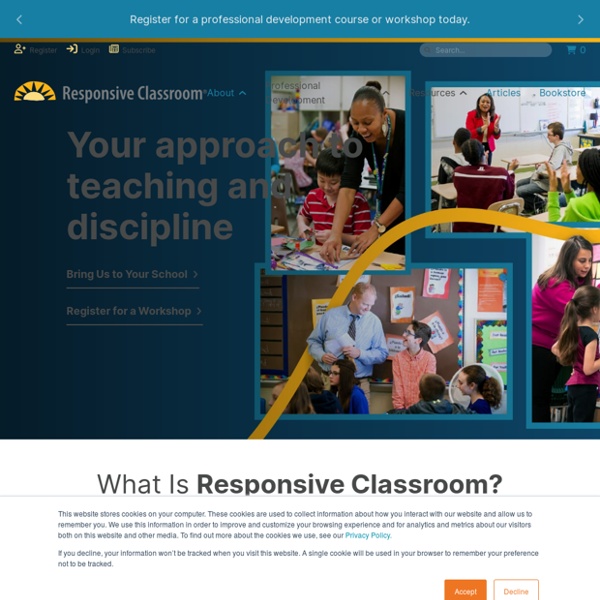



https://www.responsiveclassroom.org/
Related: Gestion de classe • AdministrativeTeacher Uses Band-Aids To Explain Difference Between Equality Vs Equity, 8-Year-Olds Understand It Better Than Adults Kids are smart, curious and adaptable, and can learn challenging concepts with remarkable ease with the right teaching methods. Show Full Text Tumblr user aloneindarknes7 illustrated this by sharing their way of teaching 8-year-olds the difference between two similar but distinct ideas, those of equality and equity. My Beginning of the Year Parent Questionnaire Two of my three kids; and that’s who this is all about Yesterday I shared my student questionnaire so I find it only apt to share my parent questionnaire as well. While there are so many things I wanted to ask my parents, I wanted to keep it short and to the point. As always, feel free to make a copy and make it your own. Here is a link to the actual form
4 Rules of Composition for Landscape Photography A Post By: Darren Rowse While I’m not always a fan of sticking strictly to the ‘rules’ or ‘guidelines’ of photography I think they can be well worth knowing and keeping in the back of your mind as you shoot (whether it’s so you can follow them or break them for effect). Here’s four ‘rules’ for landscape photography that might be helpful for those just starting out (ie they’re not meant as a definitive guide but rather a starting point) : Finding It for Free By Meredith Scaggs Found in: Advice & Support It came from catastrophe. In 2008, the Cedar River overflowed, flooding 10 square miles of the city of Cedar Rapids, Iowa. Amid the ensuing damage, many schools found themselves short on classroom supplies and without the funds to replace them.
www.kenrockwell.com-tech.htm How to Take Better Pictures © 1973 ~ 2017 Ken Rockwell and KenRockwell.com. All rights reserved. Cameras & Lens Reviews Recommended Cameras Newest Articles Recommended Books Tutorial Videos Newest Articles The Teaching Bug: Have You Filled Your Bucket Today? For those of you who are not aware of what "Bucket Fillers" are, then please visit this website: Bucket Fillers 101. In a nutshell, the Bucket Filling concept is that we all carry around invisible buckets, which is where we store our good thoughts and feelings, when our buckets are full we are happy and when our buckets are empty then we are sad. By filling each others buckets (gratitude, compassion, kindness, positive comments, etc.) we fill our own and by 'dipping' in each others bucket (negative comments, bullying, put downs, etc.) we are dipping into our own too. The book "Have You Filled Your Bucket Today?"
Visible Thinking Purpose and Goals Visible Thinking is a flexible and systematic research-based approach to integrating the development of students' thinking with content learning across subject matters. An extensive and adaptable collection of practices, Visible Thinking has a double goal: on the one hand, to cultivate students' thinking skills and dispositions, and, on the other, to deepen content learning. By thinking dispositions, we mean curiosity, concern for truth and understanding, a creative mindset, not just being skilled but also alert to thinking and learning opportunities and eager to take them
Hands On Plate Tectonics with Students Who Are Blind Additional follow up activities to use in a unit on Pangaea: Teacher preparation: Find a copy of a map of the Earth with the major plates indicated. Glue the map to a sheet of cardboard. Label the plates in large print/braille. Cut the map and cardboard along the fault lines.
New Jersey Center for Teaching and Learning Note: This page has additional resources available for logged in users. Courses by Subject: Common Core Mathematics Common Core Mathematics (Español) Visual Math Improves Math Performance - YouCubed Mathematics educators have long known that engaging students in visual representations of mathematics is extremely helpful for their learning. When youcubed offered “How Close to 100” as an activity for learning math facts with visual representations, teachers across the world were thrilled and responded with thousands of tweets showing students learning by playing the game. Some of the world’s top mathematicians engage almost entirely with visual mathematics. For example, Maryam Mirzakhani, arguably the most important mathematician of our time, works almost entirely visually.